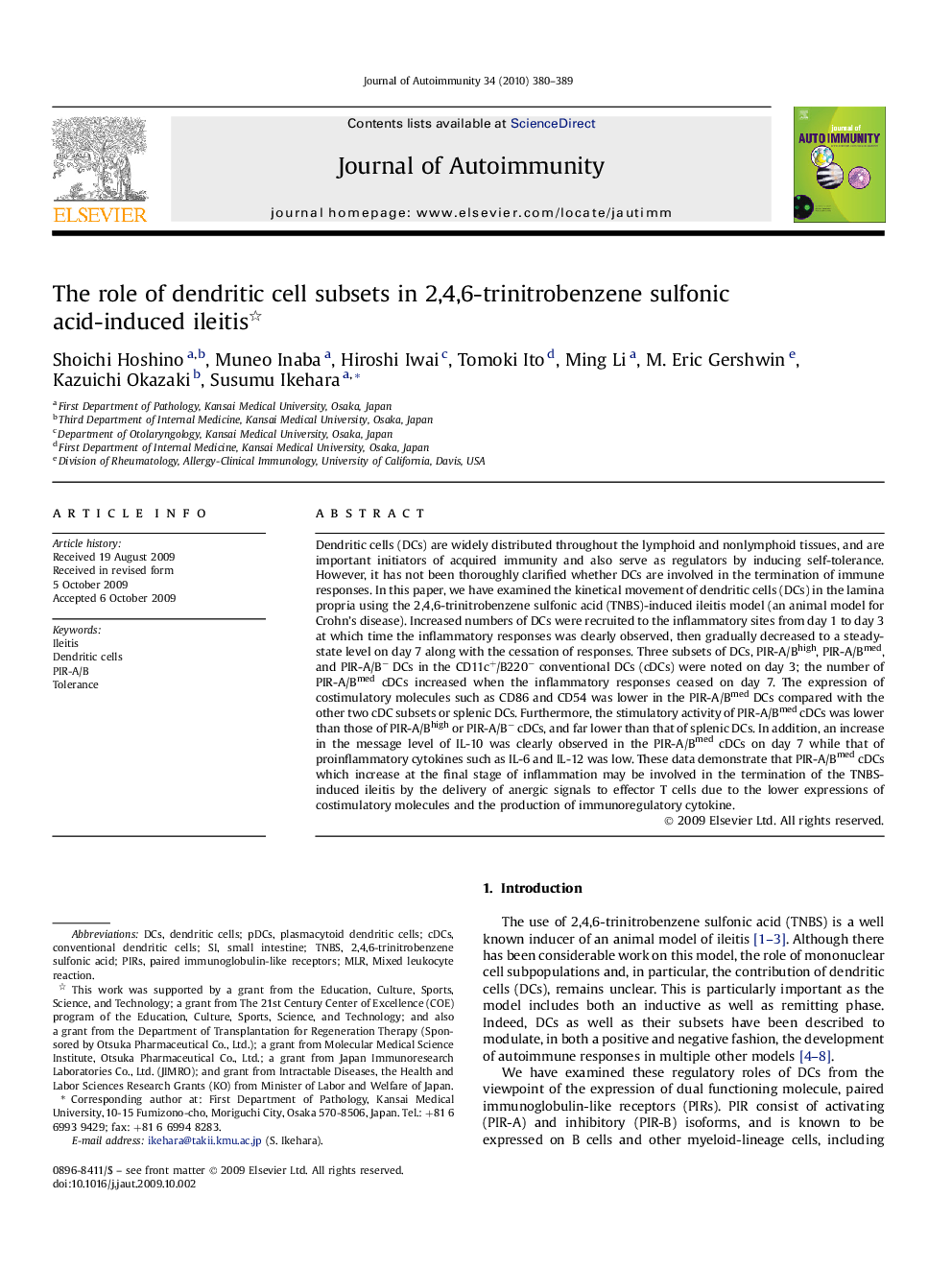| Article ID | Journal | Published Year | Pages | File Type |
|---|---|---|---|---|
| 3368303 | Journal of Autoimmunity | 2010 | 10 Pages |
Dendritic cells (DCs) are widely distributed throughout the lymphoid and nonlymphoid tissues, and are important initiators of acquired immunity and also serve as regulators by inducing self-tolerance. However, it has not been thoroughly clarified whether DCs are involved in the termination of immune responses. In this paper, we have examined the kinetical movement of dendritic cells (DCs) in the lamina propria using the 2,4,6-trinitrobenzene sulfonic acid (TNBS)-induced ileitis model (an animal model for Crohn's disease). Increased numbers of DCs were recruited to the inflammatory sites from day 1 to day 3 at which time the inflammatory responses was clearly observed, then gradually decreased to a steady-state level on day 7 along with the cessation of responses. Three subsets of DCs, PIR-A/Bhigh, PIR-A/Bmed, and PIR-A/B− DCs in the CD11c+/B220− conventional DCs (cDCs) were noted on day 3; the number of PIR-A/Bmed cDCs increased when the inflammatory responses ceased on day 7. The expression of costimulatory molecules such as CD86 and CD54 was lower in the PIR-A/Bmed DCs compared with the other two cDC subsets or splenic DCs. Furthermore, the stimulatory activity of PIR-A/Bmed cDCs was lower than those of PIR-A/Bhigh or PIR-A/B− cDCs, and far lower than that of splenic DCs. In addition, an increase in the message level of IL-10 was clearly observed in the PIR-A/Bmed cDCs on day 7 while that of proinflammatory cytokines such as IL-6 and IL-12 was low. These data demonstrate that PIR-A/Bmed cDCs which increase at the final stage of inflammation may be involved in the termination of the TNBS-induced ileitis by the delivery of anergic signals to effector T cells due to the lower expressions of costimulatory molecules and the production of immunoregulatory cytokine.
